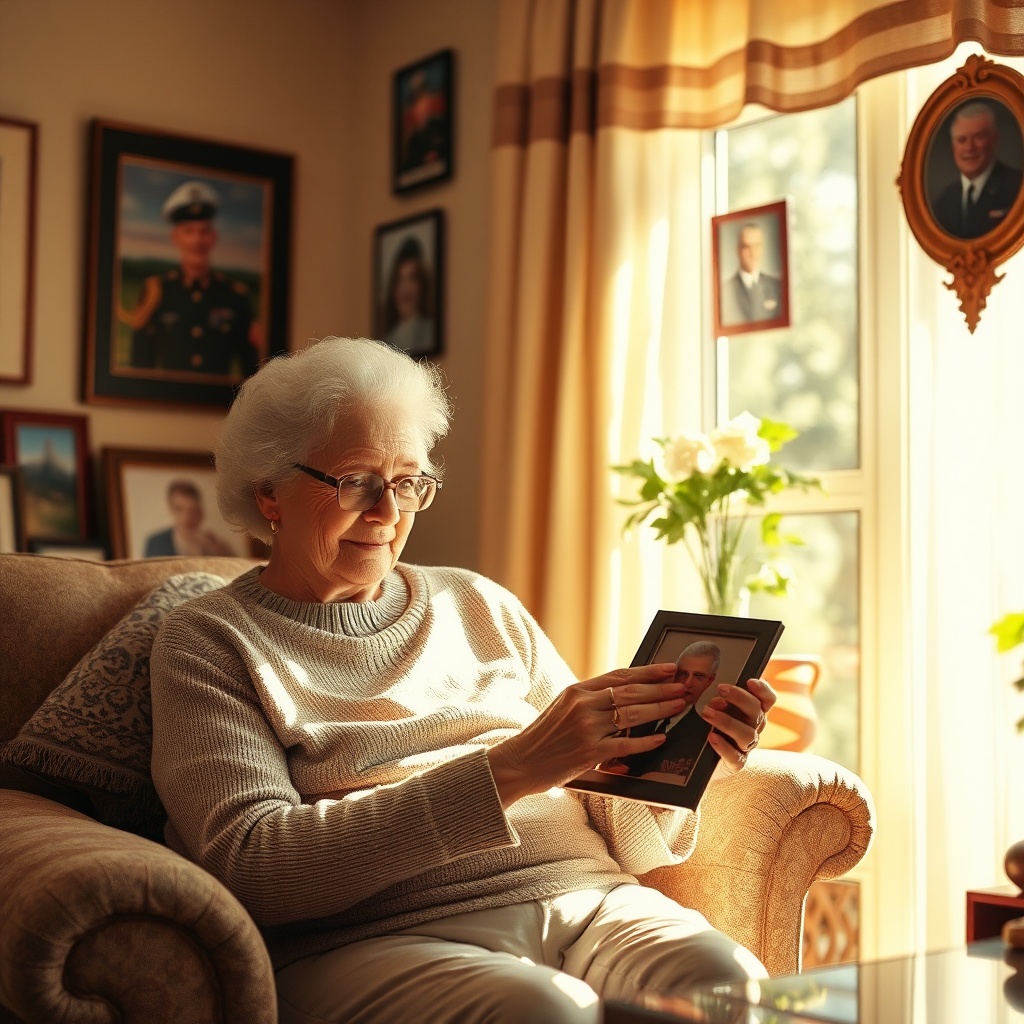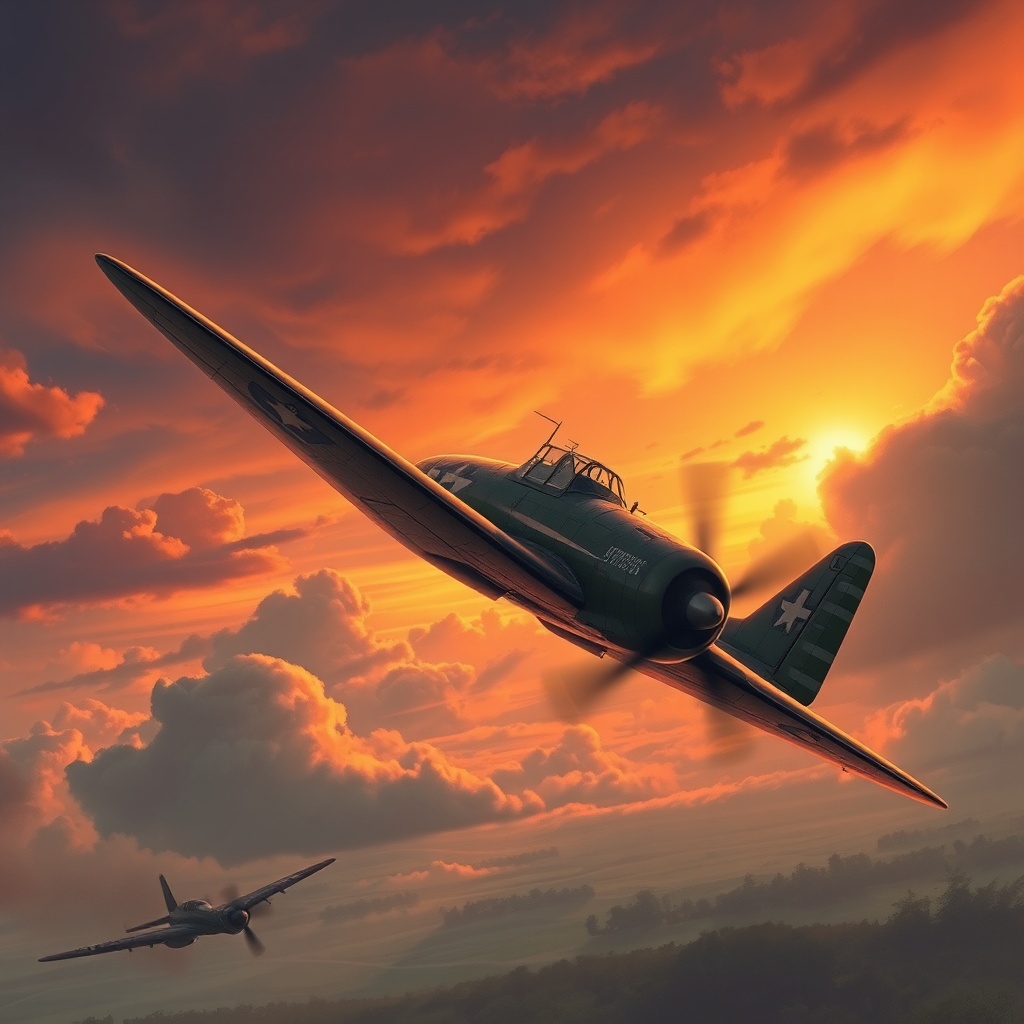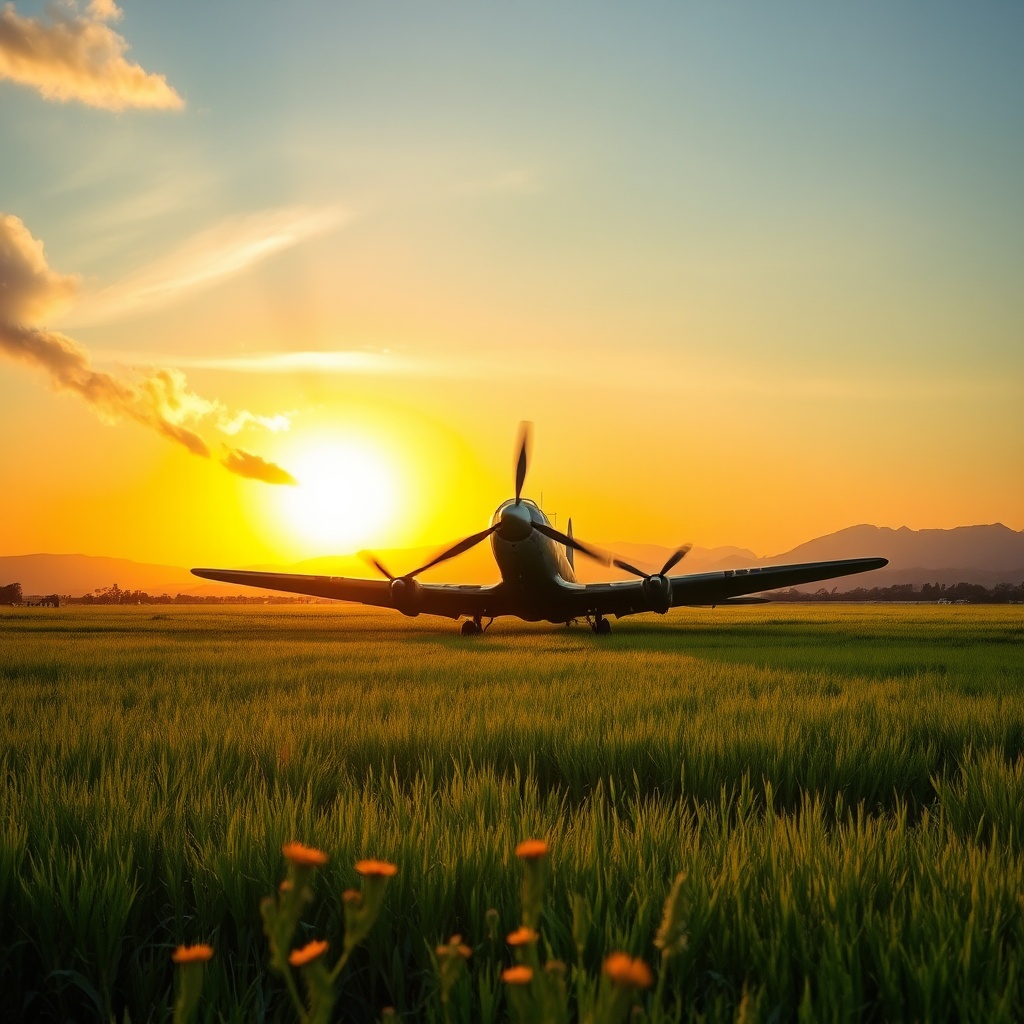Remembering Heroes: Personal Stories from Families Affected by Military Plane Crashes

In the 1960s, the skies were not only a battleground but also a stage for tragic events that would alter the lives of many families forever. This section invites you to delve into the personal stories of those who lost loved ones in military plane crashes during this tumultuous decade.
Stories of Sacrifice
Each story is a testament to bravery, resilience, and the enduring impact of loss. Below, we share poignant narratives from families who lived through these heart-wrenching experiences.
- The Johnson Family
Flight: C-130 Hercules Crash, 1965
Overview: The Johnson family lost their beloved son, Michael, who was serving as a loadmaster. His family recalls his passion for flying and the pride he took in serving his country.
Impact: His mother, Sarah, describes how the loss transformed their family dynamics, leaving a void that was never truly filled. - The Martinez Family
Flight: B-52 Stratofortress Collision, 1968
Overview: Maria Martinez shares her memories of her husband, David, who was a pilot. His stories of heroism inspired their children.
Impact: Maria emphasizes the importance of keeping David’s memory alive through family traditions and shared stories. - The Thompson Family
Flight: F-105 Thunderchief Crash, 1967
Overview: After losing his brother, Tom, in a training accident, Jake Thompson reflects on the deep bond they shared and the dreams that were cut short.
Impact: Jake’s story highlights the ongoing struggles of dealing with grief and how his brother’s legacy motivates him to advocate for veterans’ families.
Community Support
Communities rallied around these families, providing support during their darkest hours. Local veterans’ organizations, church groups, and neighborly gestures played a significant role in helping them cope with their loss.
Honoring the Fallen
Many families have found solace in memorials and commemorative events. These gatherings not only honor their loved ones but also foster a sense of community and shared understanding.
| Year | Crash Incident | Location | Number of Casualties |
|---|---|---|---|
| 1965 | C-130 Hercules | Vietnam | 35 |
| 1968 | B-52 Stratofortress | North Carolina | 4 |
| 1967 | F-105 Thunderchief | Texas | 2 |
The stories shared here reflect not just the loss but also the enduring strength of those left behind. As we remember these heroes, we honor their sacrifices and the families who continue to carry their memories in their hearts.
The Impact of Tragedy: How the 1960s Plane Crashes Shaped Military Aviation Safety

The Legacy of Loss
The 1960s were marked by significant military aviation tragedies that not only claimed lives but also served as pivotal turning points in aviation safety protocols. These events, while tragic, prompted a reassessment of safety measures and operational procedures.
Key Crashes That Changed the Landscape
Several notable crashes during this decade highlighted the urgent need for reform in military aviation:
- The 1960 USAF B-52 Crash: This incident involved a B-52 Stratofortress that tragically crashed during a routine flight, resulting in multiple fatalities. Investigations revealed critical flaws in maintenance and operational oversight.
- The 1962 Navy A-4 Skyhawk Incident: An A-4 Skyhawk crashed during a training exercise, underscoring the risks associated with flight training in adverse weather conditions.
- The 1966 C-130 Hercules Disaster: A C-130 Hercules aircraft crashed during a transport mission, prompting a thorough investigation into cargo handling and passenger safety protocols.
Changing Regulations and Safety Measures
In response to these tragic events, military aviation authorities took decisive actions:
- Implementation of Mandatory Safety Audits: Regular inspections became mandatory to ensure aircraft were maintained to the highest standards.
- Enhanced Training Programs: Flight crews underwent more rigorous training, focusing not only on flying skills but also on emergency procedures and risk management.
- Introduction of Advanced Technology: The 1960s saw the introduction of new technologies that improved navigation and communication, reducing the likelihood of human error.
Community Resilience and Remembrance
As the military community faced these tragedies, there emerged a strong sense of resilience. Veterans and families of those lost in crashes came together to support one another. Memorials were established to honor the fallen, ensuring that their sacrifices were never forgotten.
Conclusion: A Safer Future
The echoes of the tragic military plane crashes of the 1960s continue to resonate today. Through the pain and loss, substantial improvements in aviation safety have been achieved, ensuring that such tragedies are less likely to occur in the future. The lessons learned from these events have not only shaped military aviation but have also influenced commercial air travel safety standards.
Voices from the Past: Eyewitness Accounts of the Devastating Crashes

Eyewitness Accounts: A Glimpse into Tragedy
The 1960s were marked by profound military activities and, tragically, a series of devastating plane crashes that took the lives of many brave servicemen and women. Each incident left a lasting mark on those who witnessed it, each story imbued with the weight of sorrow and valor.
Personal Stories from the Crash Sites
1. The Black Hawk Incident (1966)
One eyewitness, John Thompson, recalls the chilling moment when the Black Hawk helicopter faltered in the skies above a training ground. “We heard a loud rumble, then silence. It was as if time stood still. The impact was thunderous, and we ran towards the smoke.”
2. The C-130 Hercules Crash (1968)
Mary Jenkins, a local resident, remembered the day vividly: “I was hanging laundry when I saw the plane descending fast. It was like it was struggling to stay in the air. The moment it crashed, I felt the ground shake beneath me.”
The Emotional Toll on Witnesses
Witnesses often carry the burden of these tragic moments for a lifetime. Many struggle with survivor’s guilt and the haunting memories of the lives lost. James Miller, a veteran, shared, “I often relive that day. The faces of my comrades are etched in my mind, and each anniversary brings a wave of grief.”
Remembering the Fallen
Each crash has its own story, and it is crucial to remember those who served and sacrificed their lives. Linda Garcia, whose brother perished in a plane crash, states, “I want their stories told. They were heroes, and their memories should live on.”
Interactive Reflection
Now, dear reader, reflect on these powerful accounts. What feelings do they evoke in you? How do you think stories like these shape our understanding of bravery and sacrifice? Share your thoughts.
A Legacy of Courage: Honoring the Lives Lost in Military Aviation Disasters
The 1960s was a decade marked by significant military operations and advancements in aviation technology. However, it was also a period of profound tragedy, with numerous military plane crashes claiming the lives of brave servicemen and women. These echoes of valor remind us of the sacrifices made in the name of duty and honor.
As we reflect on these harrowing events, let us take a moment to remember the individuals whose lives were cut short. Each one had a story, a family, and dreams unfulfilled. Their legacy lives on, not only in the annals of military history but also in the hearts of those they left behind.
Key Events of the 1960s
Throughout the decade, several notable military aviation disasters occurred. Below is a table summarizing some of these tragic incidents:
| Date | Aircraft | Location | Casualties |
|---|---|---|---|
| February 1961 | Lockheed C-130 Hercules | Near Lajes Field, Azores | 34 |
| March 1964 | Boeing KC-135 Stratotanker | Near Fairchild Air Force Base, Washington | 6 |
| April 1966 | Douglas DC-8 | Thule Air Base, Greenland | 4 |
| January 1968 | Lockheed P-3 Orion | Off the coast of Japan | 4 |
Remembering the Heroes
Each of these incidents represents not just a statistic but the loss of lives filled with courage. Imagine the families waiting for their loved ones to return, unaware of the impending tragedy. The ripple effects of these losses were felt not only in their immediate circles but also throughout the military community.
We honor these heroes by sharing their stories. Here’s how you can actively participate in commemorating their legacy:
Share Personal Stories: If you knew someone who served during this time, consider sharing your memories. Stories preserve their spirit.
Visit Memorials: Many military memorials honor those lost in aviation disasters. Visiting these sites can provide a sense of closure.
Participate in Remembrance Events: Many communities hold events to honor fallen servicemen and women. Your presence can be a powerful tribute.
Continuing the Legacy
As we honor those who made the ultimate sacrifice, it is vital to ensure their stories are not forgotten. Education and awareness can help future generations understand the importance of military service and the risks involved.
In conclusion, the tragic military plane crashes of the 1960s serve as a somber reminder of the bravery and sacrifice of our servicemen and women. By remembering their stories, we keep their legacies alive, ensuring that their courage echoes through time.
Lessons Learned: The Evolution of Military Aviation Protocols After the Crashes
Understanding the Crashes
The 1960s were marked by a series of tragic military plane crashes that claimed many lives and left a profound impact on military aviation. These incidents were not merely accidents; they were stark reminders of the importance of stringent safety measures in military operations.
Analyzing Key Incidents
Among the most notable crashes were:
The 1961 C-130 Hercules Crash: This incident highlighted the critical need for improved communication protocols among crew members.
The 1965 A-4 Skyhawk Mishap: This event raised questions about maintenance standards and pre-flight checks.
Lessons Learned
As we reflect on these tragedies, several key lessons emerged:
Enhanced Training Programs: Military pilots underwent rigorous training, focusing on emergency procedures and decision-making under pressure.
Strict Maintenance Protocols: Regular inspections and maintenance became mandatory, ensuring aircraft were in optimal condition before every flight.
Improved Communication Systems: The introduction of advanced communication technologies minimized misunderstandings and errors during operations.
Incident Reporting Mechanisms: Establishing clear reporting procedures for near-misses and malfunctions helped identify potential hazards before they led to disasters.
The Evolution of Military Aviation Protocols
In response to the lessons learned, military aviation protocols evolved significantly:
Introduction of Safety Regulations: New regulations ensured that all military flights adhered to strict safety guidelines.
Creation of Safety Review Boards: These boards analyzed crash incidents and recommended changes to prevent future occurrences.
Adoption of Advanced Technology: The integration of modern technology in aircraft design improved safety features, reducing the likelihood of crashes.
Engaging the Future
As we honor the memories of those lost in these tragic events, it’s vital to recognize the progress made. The evolution of military aviation protocols serves as a testament to the resilience of the armed forces and their commitment to safety. Reflecting on these changes can inspire us, reminding us that the lessons from the past continue to shape a safer future in military aviation.
Reflections on Sacrifice: The Emotional Toll of Military Plane Crashes on Communities
Understanding the Impact
Military plane crashes during the 1960s were not just tragic events; they were profound moments that rippled through communities, leaving emotional scars that lasted for generations. Many families lost their loved ones in these incidents, and the shockwaves of their sacrifice resonated deeply in the hearts of those left behind.
Collective Grief
Imagine a small town where everyone knows each other. When a military plane crashes, it doesn’t just affect the immediate family of the fallen; it touches the entire community. The streets filled with mourning, the flags flown at half-mast, and the gatherings for memorials are all vivid reminders of the collective grief that envelops the town.
The Role of Memorials
Memorials serve as a poignant reminder of the sacrifices made by service members. In many towns affected by these tragedies, memorial services became integral to the healing process. Families, friends, and neighbors would come together to honor those who had given their lives in service. These gatherings often included shared stories, tears, and a sense of solidarity among the grieving.
Long-lasting Effects
The emotional toll of military plane crashes extends beyond the immediate aftermath. Survivors often carry guilt, anger, and profound sadness for years, even decades. Communities grapple with a sense of vulnerability, questioning their safety and the price of freedom. How does one move on from such a loss?
Finding Resilience
In the face of tragedy, communities often find strength in resilience. They come together to support one another, creating support groups, and honoring the memory of those lost through annual ceremonies. These acts of remembrance help to heal the emotional wounds and reinforce the bonds within the community.
Personal Stories
When sharing personal stories, it’s crucial to recognize the different perspectives involved. Veterans, families of the deceased, and community members each have unique narratives shaped by these events. Engaging with these stories can foster understanding and empathy, allowing for deeper connections within the community.
Conclusion: Honoring Their Sacrifice
As we reflect on the emotional toll of military plane crashes, it becomes essential to honor the sacrifices made by those who served. By remembering their stories and acknowledging the pain experienced by their loved ones, we ensure that their legacy lives on. How can you contribute to keeping their memory alive in your community?
The Silent Skies: Understanding the Causes Behind the 1960s Military Plane Disasters
During the 1960s, military aviation faced numerous tragedies that echoed through the ranks and impacted countless lives. Understanding the causes behind these disasters can help us honor the memories of those who served and remind us of the importance of safety and innovation in military aviation.
The Landscape of Military Aviation in the 1960s
The 1960s was a decade marked by significant advancements in technology and a surge in military operations due to the Cold War. This era saw the introduction of new aircraft and tactics, which while revolutionary, also brought about challenges.
Common Causes of Disasters
| Cause | Description |
|---|---|
| Technical Failures | Many crashes were attributed to mechanical failures, often stemming from the rapid pace of aircraft development. Aircraft were pushed to their limits without adequate testing. |
| Pilot Error | Human error played a significant role, with fatigue and lack of experience leading to tragic mistakes during critical operations. |
| Weather Conditions | Severe weather, including storms and fog, often played a crucial role, complicating navigation and increasing the risk of accidents. |
| Maintenance Issues | Inadequate maintenance protocols and the pressure to keep aircraft operational contributed to numerous disasters. |
Impact on Families and Communities
The impact of these tragedies extended beyond the military. Families of the service members faced immense grief, and communities were left to navigate the emotional aftermath of these losses.
Learning from the Past
In response to the tragedies of the 1960s, military aviation has since implemented numerous safety protocols and technological advancements to reduce the risk of future disasters. Continuous training and a culture of safety are now emphasized to honor those who lost their lives.
Engage with the History
Reflecting on these events allows us to engage with history and understand the sacrifices made by service members. Consider sharing stories of bravery and resilience from this era, fostering a sense of connection and remembrance.
From Grief to Gratitude: How Families Found Strength After Tragedy
Understanding the Pain
The 1960s were marked by a series of military plane crashes that left indelible scars on many families. Each crash brought with it a wave of grief that was often overwhelming. Can you recall a time when you faced a loss that seemed insurmountable? For these families, the loss of a loved one in service was a profound sorrow, often compounded by the public nature of their sacrifice.
Sharing Stories Together
In the wake of tragedy, many families found solace in sharing their stories. By coming together, they created a support network that allowed them to express their grief and begin the healing process. Have you ever found comfort in sharing your experiences with others who understand? This communal sharing helped transform their sorrow into a source of strength.
Finding Purpose in Loss
As time passed, families began to seek ways to honor their loved ones. Many engaged in community service, established scholarships, or participated in memorial events. This shift from grief to gratitude was not instantaneous but evolved through conscious effort. What activities have helped you find purpose in your own life after a difficult time?
The Role of Community
Communities played a vital role in supporting these families. Local organizations and veterans’ groups provided resources and opportunities for families to connect. This support not only helped with healing but also fostered a sense of belonging. Have you experienced the power of community during tough times?
Creating Lasting Legacies
Many families chose to create lasting legacies for their loved ones. Some established foundations in their names, while others shared their stories through books and documentaries. This act of remembrance allowed their loved ones to live on in a meaningful way. Can you think of a legacy that has touched your life or the life of someone you know?
Gratitude Amidst Grief
Ultimately, families learned to embrace gratitude for the time spent with their loved ones, rather than solely focusing on their absence. This shift in perspective can be profoundly healing. How do you cultivate gratitude in your own life, especially during challenging moments?
The journey from grief to gratitude is a testament to the resilience of the human spirit. The stories of families affected by the military plane crashes of the 1960s remind us that even in the depths of sorrow, hope and strength can emerge. As we reflect on these echoes of valor, may we find inspiration in their journey of healing.
A Journey Through Time: Exploring the Historical Context of Military Aviation in the 1960s
Understanding the Era
The 1960s was a pivotal decade in the realm of military aviation. As we delve into this important period, consider how global tensions shaped the skies.
Global Tensions and Military Strategy
In the wake of World War II, nations were rapidly advancing their military technologies. The Cold War was in full swing, influencing military strategies worldwide.
| Year | Event | Impact |
|---|---|---|
| 1960 | U-2 Incident | Heightened tensions between the USA and USSR |
| 1965 | Vietnam War Escalation | Increased military operations and aircraft usage |
| 1969 | Apollo 11 Moon Landing | Demonstrated advanced aerospace capabilities |
Technological Advancements
During this time, various aircraft were developed and deployed. Look back at some key aircraft that defined military aviation:
Boeing B-52 Stratofortress: A long-range bomber that played a crucial role in the Vietnam War.
Lockheed SR-71 Blackbird: Known for its speed and stealth, revolutionizing reconnaissance missions.
McDonnell Douglas F-4 Phantom II: A versatile fighter-bomber used extensively during the Vietnam conflict.
The Human Element
Behind every flight, there were pilots, crew members, and ground personnel whose lives were deeply affected by their service. Reflect on the personal stories of those brave individuals:
Consider the pilots who faced harrowing missions, often returning with scars both visible and hidden.
Think of the families who waited anxiously for their loved ones to return home.
Tragic Events of the 1960s
Sadly, the decade also saw a series of tragic military plane crashes that left lasting impacts:
1961: The Lockheed C-130 Hercules crash in Germany: A tragic accident that claimed numerous lives.
1966: The mid-air collision of two B-52 bombers: A disaster that sparked discussions on safety protocols.
1969: The crash of a McDonnell Douglas F-4 Phantom II during a training mission: A stark reminder of the dangers faced by military aviators.
Reflection and Legacy
As we reflect on the military aviation of the 1960s, it’s essential to remember the sacrifices made by those who served. Their legacy continues to shape modern aviation and military strategy today.
Engage with the past: What memories do you hold of this era? How did these events shape your view on military aviation?
Echoes of Remembrance: Memorials and Tributes to the Fallen Aviators
Reflecting on Sacrifice
As we delve into the somber yet honorable legacy of our fallen aviators from the 1960s, it is essential to remember the profound sacrifices made by the brave men and women who served their country. These heroes, often cut down in the prime of their lives, left behind not just memories, but also a legacy that continues to inspire.
Memorials: A Place of Honor
Across the nation, various memorials stand as solemn reminders of the sacrifices made by military personnel. These sites not only commemorate those who lost their lives in tragic plane crashes but also serve as gathering places for reflection and remembrance. Some notable memorials include:
- The National Military Aviation Museum – Located in Pensacola, Florida, this museum honors the legacy of military aviation and features tributes to those who lost their lives in service.
- The Arlington National Cemetery – A sacred ground where many aviators are laid to rest, offering a serene space for visitors to pay their respects.
- The Vietnam Veterans Memorial – While primarily focused on the Vietnam War, this memorial also honors those who served in the air during that tumultuous period.
Tributes: Remembering Their Stories
In addition to physical memorials, various tributes help keep the memories of these aviators alive:
- Annual Memorial Services – Many communities hold annual services where families and friends can gather to remember their loved ones. These events often feature speeches, music, and the sharing of stories that highlight the bravery of those who served.
- Documentaries and Films – Several documentaries focus on the stories of military aviators, bringing their experiences to light and ensuring that their sacrifices are not forgotten.
- Books and Publications – Numerous authors have dedicated their works to chronicling the lives and missions of aviators from the 1960s, preserving their legacies for future generations.
Interactive Remembrance
For those wishing to engage more deeply with the memories of these aviators, consider:
- Visiting Local Memorials – Take a trip to a local memorial dedicated to military aviators. Spend time reflecting on their sacrifices and the impact they had on history.
- Participating in Veteran Events – Join community events focused on honoring veterans. These gatherings often include storytelling sessions, allowing for personal accounts from those who served.
- Creating Personal Tributes – Consider crafting a personal tribute, whether it be a letter, a piece of art, or a simple act of kindness, to honor the memory of a fallen aviator.
Conclusion: Keeping Their Memory Alive
Memorials and tributes are more than just physical structures or events. They are a testament to the lives lost and the stories that deserve to be told. By participating in remembrance activities, we ensure that the echoes of these brave aviators continue to resonate within our hearts and minds.
